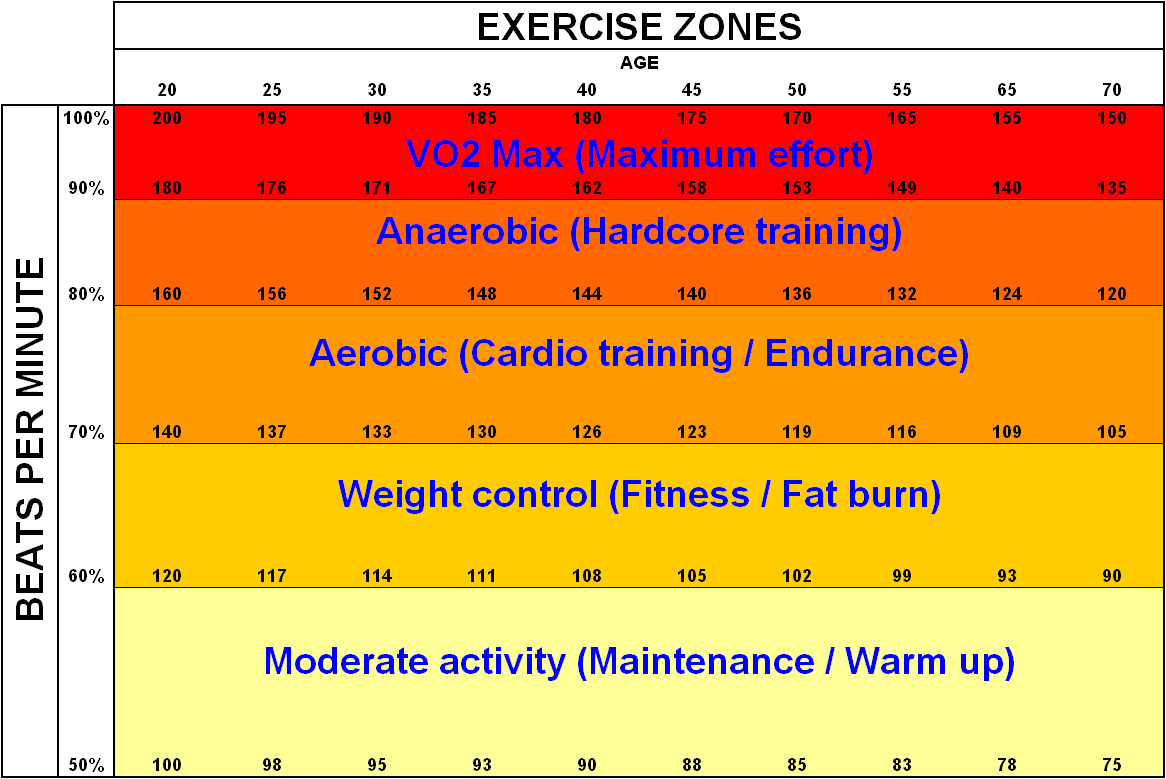One of the things I committed to doing in order to improve my training is to start using heart rate based training instead of just taking the pace times that Runners World SmartCoach or similar tools auto-generated. Very shortly thereafter, I learned that there’s about 50 different “best practices” on how to go about this.
I’ve rewritten this post several times trying to figure out where to start and how many of the different “how to” plans I found to even get in to. During that time, both Active.com and Stephen Auker (@nimblerunner) published well written articles on heart rate training, so in this version I’ll try to cover what they didn’t.
In a nutshell, heart rate training is simply taking the fact that your body metabolizes differently at different heart rates in order to deliver energy to your muscles (whether your exertion is running, aerobics, weightlifting, or anything else) and breaking these different heart rates down in to zones so as to provide a definition for the type of impact that each level of effort will have on your body (both short term and long term).
These zones are not static numbers for all people. Everything is expressed as a percentage of your maximum heart rate – that is, the heart rate your body can not maintain for more than a minute or so and the point at which you physically can not exert any further effort1. Two things vary from study to study, coach to coach, and expert to expert; the actual definitions of the zones themselves and how to calculate the percentages. Kind of the key to everything, right?
Max Heart Rate
One thing everyone agrees on is that the only way to truly know your maximum heart rate is to get a proper stress test done. Best case: cardiologist. Second best: athletic coach or personal trainer with the proper equipment and experience to do it right2. Third best: you with the proper equipment and safety precautions on a treadmill. And the worst? Use some mathematical formula you found on some jackass’ blog to estimate it and consider it gospel.
Let’s start with The Big Lie:
- 220 – [your age]
This formula is probably the most common; posted on the wall at your gym, printed in the American Council on Exercise‘s instructor training materials, and repeated time and time again as “the best way.” Probably because it came from Dr. William Haskell and his boss Dr. Sam Fox at a World Health Organization talk regarding Haskell’s 1968 findings that would soon be published as this chart:
Almost every reference to this formula goes on to say how it’s junk and there are better formulas. Physical Therapist Doug Kelsey writes how the Haskell’s findings were based on a small sample of people – all men, all under sixty, and none of them particularly active. He did no hands on studies, but rather extrapolated from existing research in order to work out what a safe level of exercise would be for a person who’d recently had a heart attack. Personal Trainer Christian Finn and Kelsey both tell the story of how Haskell and Fox were looking at the chart and just happened to notice the pattern of maximums being around 220 – your age.
On a small sample. Of one gender. Of a limited age range. And a limited activity level.
Moving on, a number of “better” formulas have been proposed, 43 of which were compared to actual stress test results in a 2002 University of New Mexico study. I’ve come across some sites that reference this study and indicate that the result was that 205.8 – (0.685 * [your age]) is the best one to use3. The point that’s missing is the first conclusion of the UNM study: “Currently, there is no acceptable method to estimate HRmax.” It goes on to acknowledge that the 205.8 formula is the best they found, but another oft-ignored caveat on that is that “the error
(Sxy=6.4 b/min) is still unacceptably large.”
For the love of God, let’s move on. Eh?
I’m not going to list out all 43, but here’s the most common formula’s I’ve found on assorted and sundry running-centric web sites:
- 220 – [your age]
- 205.8 – (0.685 * [your age])
- Men: 210 – (0.5 * [your age]) – (0.05 % [your weight]) + 4
Women: 210 – (0.5 * [your age]) – (0.01 % [your weight])4 - 217 – (0.85 * [your age])5
For me, that’s 187, 183.195 (round to 183), 190, or 188.95 (round to 189), depending on which formula I use. And I’ve seen my heart rate hit 193 on my monitor. Granted, the monitor isn’t necessarily the most accurate device in the world, but my heart didn’t explode. (That’s even beyond the 6.4 bpm margin of error UNM acknowledged!)
All of these methods are estimates. They will get you in the ball park, but not necessarily be accurate. When using the max heart rate to determine the range of training zones, a reasonable estimate is good, but not great. The best way to truly find my max heart rate is a proper stress test, but not having a viable place to do that at the moment, I’m going with 194 so that math works.
To be continued . . . I’ve been sitting on this post for so long it’s making my head hurt. It’s 10 PM, I’m running a 5k in the morning, then catching a flight to visit my mother for Mother’s Day. So we’ll make this a two parter and pick up with the different zones (and different interpretations of them) and what they’re for next week. Until then, remember the moral of the story: estimations are estimations and tests are tests. Find a place to get a proper test done.








